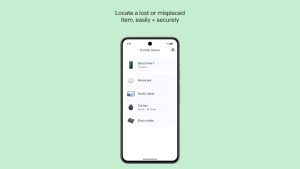Losing your Android phone isn’t just about misplacing a device; it’s a potential data security disaster. With personal data, banking apps, and sensitive documents stored on our smartphones, losing access to them can be compromising. But before rushing to buy a new phone, here’s how you can track down your lost device and safeguard your digital information using Google’s Find My Device network.
Finding Your Android Phone with Google Find My Device
If you’ve misplaced your Android phone at the office, home, or a local café, try using Google’s Find My Device network to locate it. Simply visit the Google Find My Device website, sign in with your Google account details, and confirm your phone model to see its live location on a map. You can even make the phone ring on silent or vibrate mode to help locate it.

Using Google’s Find My Device Network
Firstly, leverage Google’s Find My Device network. This feature offers two options to tailor your security: “Off” and “Without network.”
- Off: Opting out entirely means your device won’t participate in locating other lost devices, and Find My Device won’t store location data while the phone is online. This option is for those who prefer privacy over network capabilities.
- Without network: This option allows Find My Device to store location data for your devices while they’re online, even if the battery is dead or there’s no signal. It offers the convenience of tracking your device’s last known location without compromising privacy.
What’s New with Find My Device?
Google’s Find My Device app, akin to iOS’s Find My app, has been a staple for tracking lost phones. However, its effectiveness was limited by the requirement for devices to be online for accurate location tracking.


A recent update to Find My Device changes this paradigm, enabling offline device location tracking. This significant overhaul leverages the network of other online Android devices, including smartphones like the Pixel 8, trackers, and even headphones, to pinpoint the whereabouts of your device.
The rollout of this update was delayed as Google collaborated with Apple to establish an industry standard, ensuring user privacy and preventing potential misuse akin to issues faced by Apple with the AirTag release.
Opting out of the Find My Device network is now possible with the latest update. Users can follow these steps:
- Open the Find My Device app on your Android device.
- Tap on your profile picture.
- Access Find My Device settings.
- Select “Find your offline devices” to manage your network preferences.
This update marks a significant advancement in device tracking technology, enhancing user convenience while maintaining robust security measures. Users now have greater control over their privacy settings, ensuring peace of mind in an increasingly connected world.
What to Do if Your Android Phone is Lost or Stolen
If your Android device is stolen and out of your reach, follow these steps to secure your data:
- Factory Reset the Phone: Google’s Find My Device service not only helps locate your phone but also secures and resets it. You can remotely lock the phone with a PIN, password, or pattern, or perform a factory reset to erase all data.
- Change Essential Account Passwords: If you can’t locate your phone using the Find My Device network, change passwords for important accounts like banking, social media, and email to prevent unauthorized access.
- Contact the Authorities: Report the theft to local authorities to prevent potential misuse of your stolen phone for illegal activities. They can also work with your carrier to track down the device.
- Check Your Carrier Coverage: Major US carriers offer protection plans covering theft and damage. Check if you have insurance coverage through your carrier or consider third-party insurance providers.
- Review Your Homeowner’s or Renter’s Insurance: Your homeowner’s or renter’s insurance may cover stolen phones in specific situations like theft, fire, or vandalism. Review your policy to see if you’re eligible for reimbursement.
Lost Your Android Phone? Losing your Android phone isn’t just inconvenient—it’s a threat to your privacy and security. While apps like Google’s Find My Device offer some control, they’re not perfect. It’s crucial for users to act fast, wiping the device remotely and changing passwords right away. But relying solely on tech isn’t enough. Getting law enforcement involved and looking into insurance options are vital steps to recover your device. Losing your phone shouldn’t mean losing your peace of mind. Take control, protect your data, and don’t let thieves call the shots.
